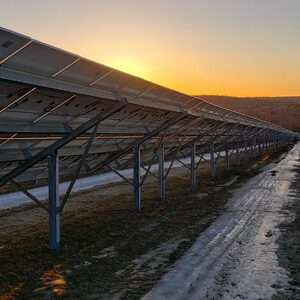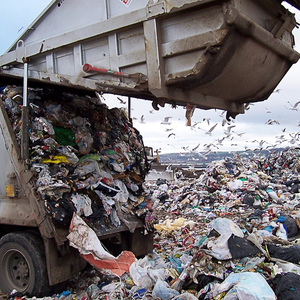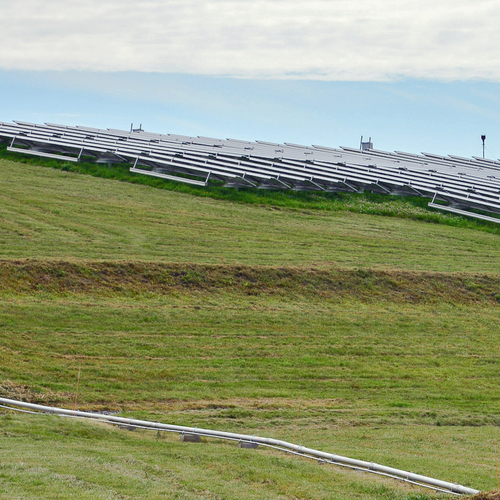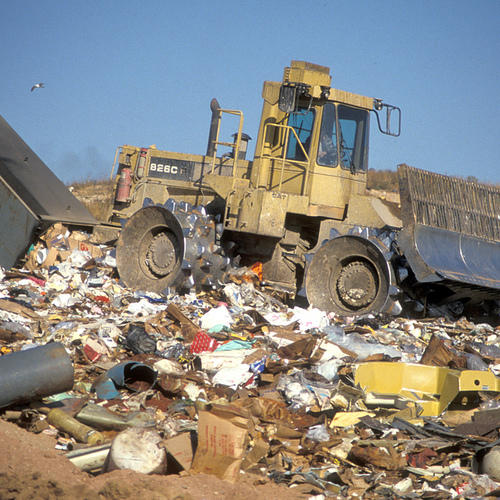
The more than 10,000 closed or inactive landfills around the U.S. are ideal for developing more solar energy but remain an underused resource, a new report from the Rocky Mountain Institute (RMI) says.
Devoid of trees and other obstructions, landfills have good solar exposure, and turning them into solar farms would help municipalities meet renewable energy goals. Nationally, the amount of potential solar energy from these sites could be significant, the report says, enough to power 7.8 million homes.
Turning closed landfills into active solar farms, however, is not common practice. Closed landfills are big enough for an estimated 63 gigawatts (GW) of solar capacity, but so far just 500 megawatts have been deployed. All but 27% of utility-scale solar development on landfills has been in the Northeast, with Massachusetts accounting for 52% of the total and the balance distributed over Connecticut, New Jersey, and New York.
“Trends in both the number of projects deployed and project scale indicate that the landfill solar industry is nowhere close to reaching full maturity,” the authors said. “These trends also suggest that the deployment of landfill solar and the size of each project (plus the resulting clean electricity and jobs) are predominantly within the control of individual states and local governments.”
Drive for renewables is growing
A concerted drive to develop more old landfills into solar farms would solve a couple of problems. First, most towns and cities saddled with closed landfills haven’t figured out what to do with the them. They’ve been turned into the occasional golf course or recreational area, but many communities have no planned use for the space. At the same time, more than 160 U.S. communities have set 100% renewable energy targets for themselves as part of the “America Is All In” movement. Twenty-nine states have adopted renewable portfolio standards, which set specific targets for the amount of renewable energy on the grid.
To date, most of the 13.9 GW of renewable energy acquisitions by U.S. cities have been via smaller, on-site solar projects or contracts with utility-scale wind and solar installations far enough away to limit the potential for local jobs and local tax revenue.
More recently, some municipalities have been installing solar on closed landfills, or “brownfields.” For a variety of reasons, they aren’t suitable for other purposes—buried hazardous materials, the presence of landfill gas wells that limit ground penetration, and settling that can occur over time.
But old landfills typically may have existing connections to the local grid, as well as road access. Federal and state programs may provide grants and other incentives for cleaning them up for reuse, the report says.
Righting environmental injustices
There are social as well as energy implications for solar expansion onto closed landfills, according to the report.
Landfills are often located near low-income communities. Reusing the sites for energy development is a sustainable, non-hazardous alternative, as well as an opportunity for solar education. That said, disadvantaged and minority communities should get the chance to participate in the design process.
“Reinventing one closed landfill with solar in a community will by no means alleviate decades of policy and planning failures,” the report says, “but it can be a productive step for communities that have often been taken advantage of [during] prior landfill siting decisions and operations.”
As evidence, the authors cite a Texas court case dating from 1979 which pitted a Black neighborhood against the Southwestern Waste Management Corporation over the location of a solid waste site in Harris County. A state district court did not find intentional discrimination, but it did note that the landfill would affect land values, the tax base, aesthetics, and the health and safety of nearby residents. The landfill was located just 1700 ft. from a high school.
Three years later, a Black community in North Carolina protested the location of a hazardous waste site in Warren County. The U.S. Department of Energy later concluded that “race was the most significant factor in siting hazardous waste facilities and that three out of every five five African Americans and Hispanics are living in a community housing toxic waste sites.”
Planning solar farms at these sites is a way of righting some of these past wrongs, the report says.
Still, there are complications
Among the challenges that developers face in placing solar projects at landfills are these:
- Landfills are capped to prevent water from percolating through buried waste. Caps are likely to require a lighter, ballasted system that don’t use invasive foundation systems. Some types of racking systems won’t work.
- Settling can affect the orientation of solar panels.
- Projects may have to work around site features that include leachate and gas collection systems, plus monitoring and maintenance operations.
- Communities will have and express concerns.
Keith Hevenor, communication manager for Nexamp, a solar developer with operations in a dozen states, also points out that landfill conversions must be within a certain distance to high-capacity transmission lines or an electrical substation in order to make the project viable.
“You can’t build out 20 miles of transmission lines,” he said. “Proximity to grid infrastructure is one of the keys for siting a community solar project.”
Scott Gibson is a contributing writer at Green Building Advisor and Fine Homebuilding magazine.
Weekly Newsletter
Get building science and energy efficiency advice, plus special offers, in your inbox.















One Comment
IMO, the #1 criterion in locating solar farms is where they are most beneficial (vs detrimental) to the grid. If that means some communities don't have their own local solar farm, that's fine.
Log in or create an account to post a comment.
Sign up Log in